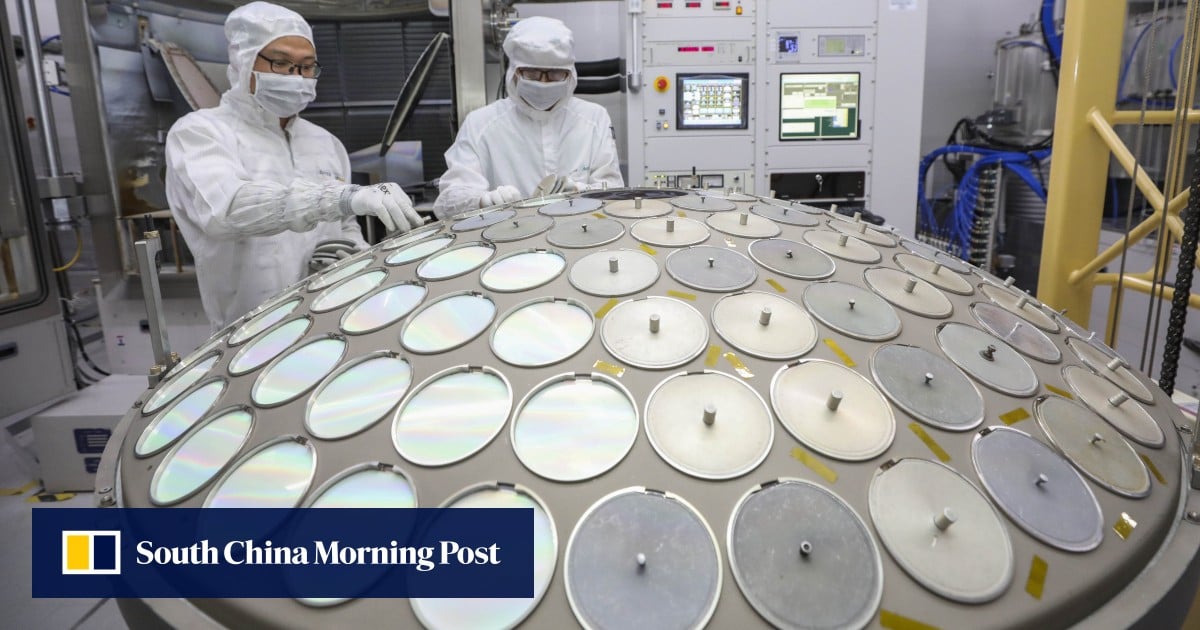
In the face of Washington’s tech-containment efforts, Beijing has unveiled a new strategy to turn home-grown innovations into commercialised products that it hopes will compete with international offerings.
The ambitious plan, unveiled on Tuesday, will revolve around forming five advanced pilot-scale production facilities that are intended to help China climb up the global value chain and consolidate its status as the world’s top manufacturer.
“We need to promote the simultaneous development of pilot-scale trials, innovation chains and industrial chains to provide strong support for the high-quality development of the manufacturing industry,” the Ministry of Industry and Information Technology said.
China’s economic malaise, stock slump raises alarms: ‘Where do we go from here?’
China’s economic malaise, stock slump raises alarms: ‘Where do we go from here?’
Pilot-scale production is a process linking laboratory research with mass production. And Beijing considers this vital as it strives to cultivate various speciality giants to strengthen the resiliency of its supply chains and also catch up in areas such as artificial intelligence, quantum computing and biomedical manufacturing.
The ministry said it would increase the supply of products commonly used in pilot tests, including precise measuring instruments, high-end testing equipment and design simulation software.
“We will prioritise testing materials, products and equipment with major application prospects and high value-added [benefits] … for an industrial restructuring,” it added.
Also, manufacturers were urged to increase their use of machine-learning, artificial intelligence and digital technologies in pilot tests, and to share data with suppliers, in a bid to shorten research-and-development cycles while reducing related costs.
Peng Peng, executive chairman of the Guangdong Society of Reform, called these pilot tests “a crucial step toward converting scientific research into real-life production”.
“China has the world’s top-ranked volume of published papers and numerous patents for inventions, but they are put on the shelf without mass applications,” he said.
“Apart from insufficient input in R&D, most Chinese manufacturers are pursuing quick market results, but are impatient with pilot research.”
And Peng said it was inevitable that Beijing would take the lead in strengthening manufacturers’ willingness to carry out pilot experiments if China wants to improve the conversion rate of scientific results while addressing vulnerabilities in its industrial chains.
China has long strived to enhance its industrial development, which helped turn the nation into the so-called world’s factory and sent China-made products to every corner of the world.
China cuts banks’ reserve ratio, signals more tools in pipeline to quell fears
China cuts banks’ reserve ratio, signals more tools in pipeline to quell fears
But in the last several years, challenges have intensified. Many manufacturers in low-end industries are shifting to more cost-effective neighbouring countries such as Vietnam and India, while the US and its allies have intensified tech curbs, as seen in its restrictions placed on shipments of high-end chips.
Currently, only 37.3 per cent of China’s industrial companies with annual revenue greater than 20 million yuan (US$3.07 million) have carried out research-and-testing activities, according to the ministry.
National spending on research and development accounted for 2.64 per cent of China’s gross domestic product last year, according to data provided by the National Bureau of Statistics.
In comparison, the percentage is lower than the 3.46 per cent in the US and 4.93 per cent in South Korea back in 2021, according to the most recently available World Bank data.


